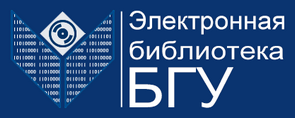Пожалуйста, используйте этот идентификатор, чтобы цитировать или ссылаться на этот документ:
https://elib.bsu.by/handle/123456789/265029| Заглавие документа: | 3D assembly of silica encapsulated semiconductor nanocrystals |
| Авторы: | Rengers, C. Voitekhovich, S.V. Kittler, S. Wolf, A. Adam, M. Gaponik, N. Kaskel, S. Eychmuller, A. |
| Тема: | ЭБ БГУ::ЕСТЕСТВЕННЫЕ И ТОЧНЫЕ НАУКИ::Физика |
| Дата публикации: | 2015 |
| Издатель: | Royal Society of Chemistry |
| Библиографическое описание источника: | Nanoscale 2015;7(29):12713-12721. |
| Аннотация: | Non-ordered porous networks, so-called aerogels, can be achieved by the 3D assembly of quantum dots (QDs). These materials are well suited for photonic applications, however a certain quenching of the photoluminescence (PL) intensity is observed in these structures. This PL quenching is mainly attributed to the energy transfer mechanisms that result from the close contact of the nanoparticles in the network. Here, we demonstrate the formation of a novel aerogel material with non-quenching PL behaviour by non-classical, reversible gel formation from tetrazole capped silica encapsulated QDs. Monitoring of the gelation/degelation by optical spectroscopy showed that the optical properties of the nanocrystals could be preserved in the 3D network since no spectral shifts and lifetime shortening, which can be attributed to the coupling between QDs, are observed in the gels as compared to the original colloidal solutions. In comparison with other QD-silica monoliths, QDs in our gels are homogeneously distributed with a distinct and controllable distance. In addition we show that the silica shell is porous and allows metal ions to pass through the shell and interact with the QD core causing detectable changes of the emission properties. We further show the applicability of this gelation method to other QD materials which sets the stage for facile preparation of a variety of mixed gel structures. |
| URI документа: | https://elib.bsu.by/handle/123456789/265029 |
| DOI документа: | 10.1039/c5nr01880c |
| Scopus идентификатор документа: | 84937550363 |
| Финансовая поддержка: | This work was supported by DFG project EY16/10-2, the European Research Council (ERC-2013-AdG project AEROCAT) and the EU FP7 Network of Excellence “Nanophotonics for Energy Efficiency”. S.V. gratefully acknowledges the European Science Foundation for the exchange grant within ESF activity “New Approaches to Biochemical Sensing with Plasmonic Nanobiophotonics (PLASMON-BIONANOSENSE)”. Special thanks to Zoran Popoviç for imparting information on silica coating. |
| Располагается в коллекциях: | Статьи сотрудников НИИ ФХП |
Полный текст документа:
| Файл | Описание | Размер | Формат | |
|---|---|---|---|---|
| c5nr01880c.pdf | 3,23 MB | Adobe PDF | Открыть |
Все документы в Электронной библиотеке защищены авторским правом, все права сохранены.

